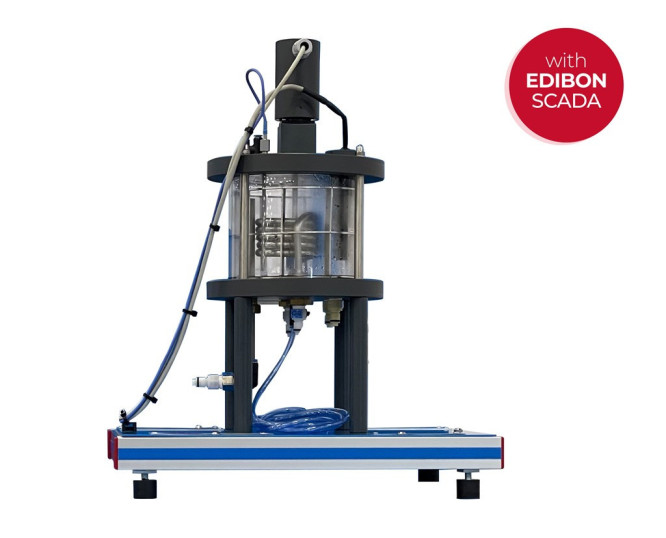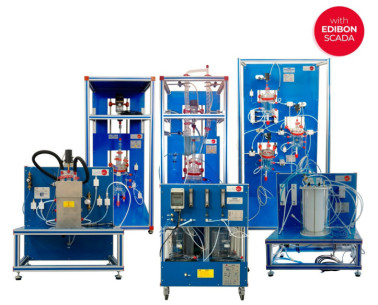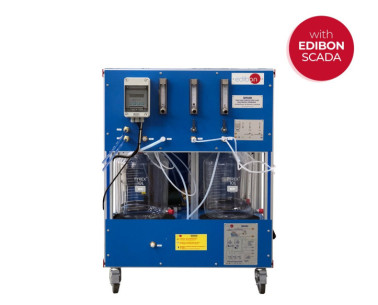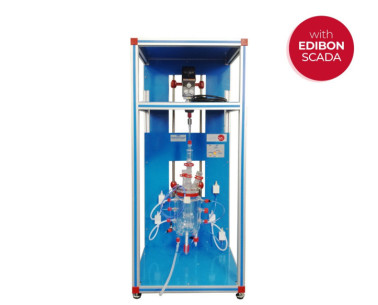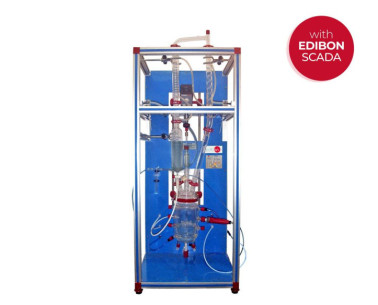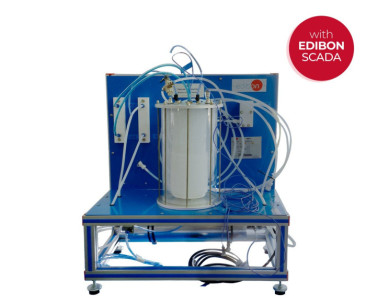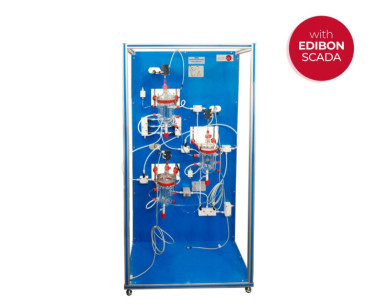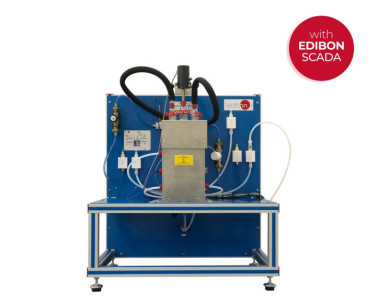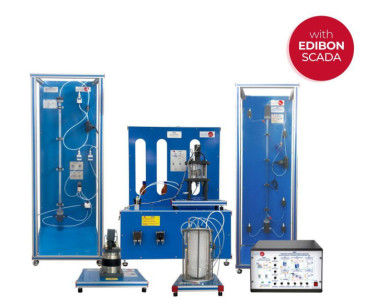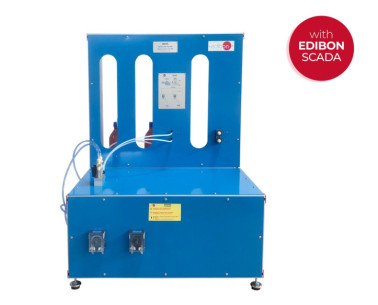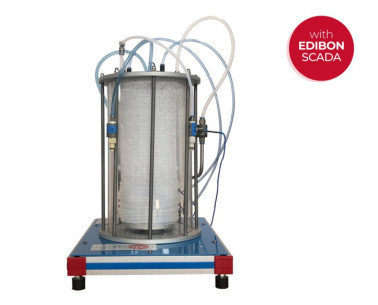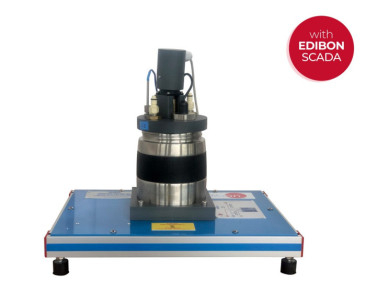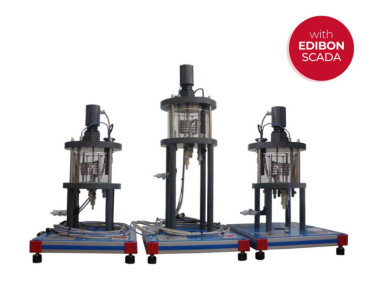QRCAC 연속 탱크 교반 반응기, QRC용, 컴퓨터 제어 (PC)
혁신적인 시스템
The Computer Controlled Continuous Stirred Tank Reactor for QRC, "QRCAC", designed by EDIBON, provides a controlled environment for detailed kinetic study of homogeneous liquid-liquid chemical reactions. This type of reactor, also known as CSTR (Continuous Stirred-Tank Reactor), is characterized by having the reactants in a tank where they are constantly stirred.
확장
실험실
관련 뉴스
일반적인 설명
The Computer Controlled Continuous Stirred Tank Reactor for QRC, "QRCAC", designed by EDIBON, provides a controlled environment for detailed kinetic study of homogeneous liquid-liquid chemical reactions. This type of reactor, also known as CSTR (Continuous Stirred-Tank Reactor), is characterized by having the reactants in a tank where they are constantly stirred.
Through a series of practices, it allows for the determination of ionic conductivity, obtaining the reaction order with respect to different compounds, calculating rate constants, formulating rate equations, and analyzing the variation of kinetics with temperature. Additionally, it offers the possibility to compare theoretical and experimental results, study mixing effects, and perform operations both in batch and continuous modes. With the ability to calibrate temperature and conductivity sensors, the "QRCAC" is a comprehensive and versatile unit for training and research in chemical engineering, contributing to the advancement of knowledge in this field.
To work with this reactor, the Base and Service Unit, "QUSC", is required, which supplies the necessary reagents and thermostatic water for proper operation.
These Computer Controlled Units are supplied with EDIBON Computer Control System (SCADA), and includes: The unit itself + a Control Interface Box + a Data Acquisition Board + Computer Control, Data Acquisition and Data Management Software Packages, for controlling the process and all parameters involved in the process.
연습 및 가이드
매뉴얼에 포함 된 가이드 실기 연습
- Determination of the ionic conductivities.
- Batch operation. Obtaining of the reaction order respect to ethylacetate. Initial velocity method.
- Batch operation. Obtaining of the reaction order respect to sodium hydroxide. Initial velocity method.
- Batch operation. Velocity Constant Computation. Constant sodium hydroxide initial concentration.
- Batch operation. Velocity Constant Computation. Constant ethylacetate initial concentration.
- Velocity equation formulation.
- Batch operation. Variation of the kinetic constant with temperature. Arrhenius Equation.
- Batch operation. Theoretical and experimental conversion comparative. Deviation from ideality.
- Batch operation. Mixture effects.
- Continuous operation.
- Continuous operation. Mixture effects.
- Conductivity measurement system: conductimeter.
- Variation of conversion with residence time.
- Residence time distribution.
- Determination of the reaction rate constant.
- Sensors calibration.
장비로 수행 할 수있는 더 많은 실용적 연습
- Many students view results simultaneously. To view all results in real time in the classroom by means of a projector or an electronic whiteboard.
- Open Control, Multicontrol and Real Time Control. This unit allows intrinsically and/or extrinsically to change the span, gains, proportional, integral, derivate parameters, etc, in real time.
- The Computer Control System with SCADA and PID Control allow a real industrial simulation.
- This unit is totally safe as uses mechanical, electrical and electronic, and software safety devices.
- This unit can be used for doing applied research.
- This unit can be used for giving training courses to Industries even to other Technical Education Institutions.
- Control of the unit process through the control interface box without the computer.
- Visualization of all the sensors values used in the unit process.
- By using PLC-PI additional 19 more exercises can be done.
- Several other exercises can be done and designed by the user.
보완 장비
QRQC용 기본 및 서비스 유닛
교반기와 함께하는 등온 반응기
교반기와 함께하는 등온 반응기 및 증류
관로 반응기
연속 교반 탱크 반응기
단열 및 등온 반응기
화학 반응기, 컴퓨터 제어 (PC)
QRC를 위한 베이스 및 서비스 유닛
관로 반응기, QRC용, 컴퓨터 제어 (PC)
배치 반응기, QRC용, 컴퓨터 제어 (PC)
연속 교반 탱크 반응기, QRC용, 컴퓨터 제어 (PC)
품질

판매 후 서비스

 쿠키 기본 설정
쿠키 기본 설정

